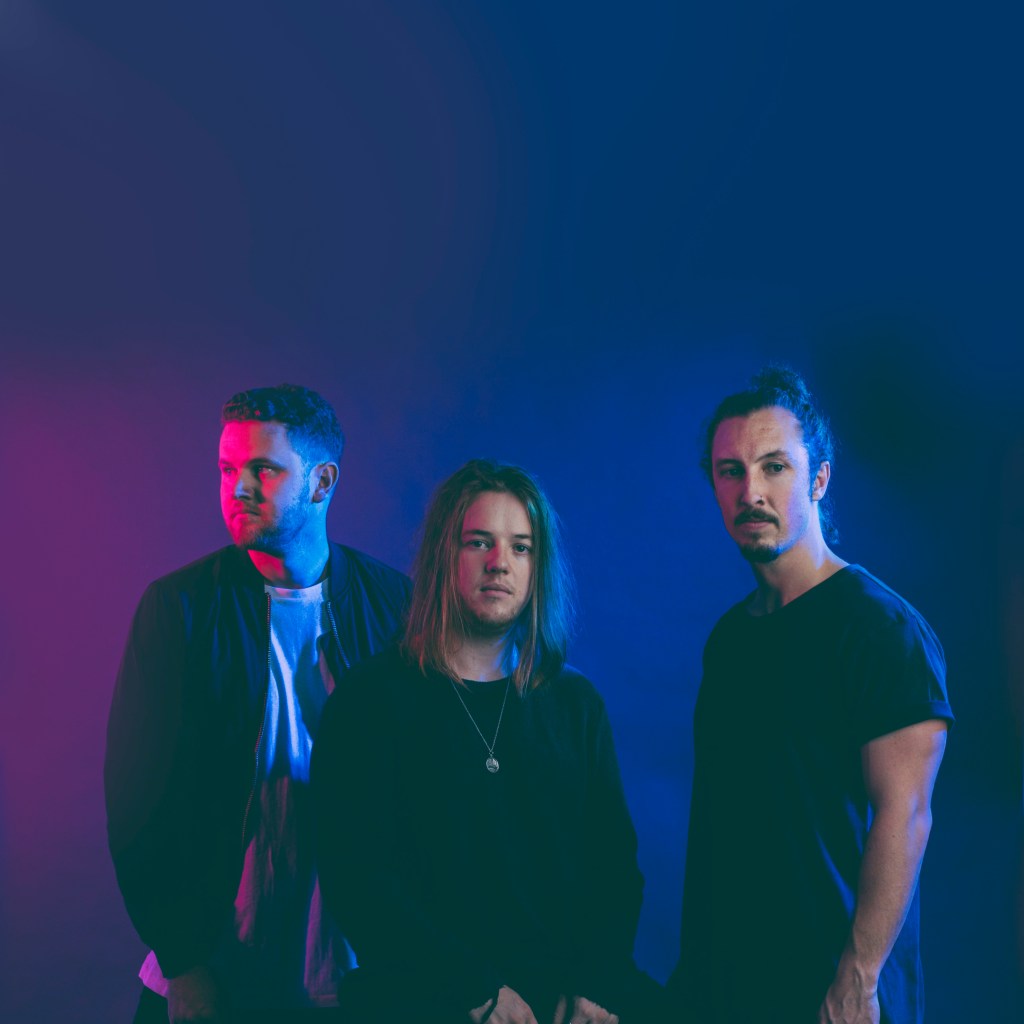In the three years since Canberra dance trio SAFIA released their debut LP Internal, things have only gotten bigger and better. They went gold with two separate singles from the album, scored an ARIA nomination, picked up two APRA awards and racked up Spotify plays well into nine figures – and when they took these songs to the people, the people would promptly sell out every single show they put on.
Needless to say, there was a significant amount of pressure on the band – vocalist Ben Woolner, guitarist/keyboardist Harry Sayers and drummer Michael Bell – to make lightning strike twice. As such, the sequel to Internal that they have crafted was not a case of striking while the iron was hot – rather, the band took an extensive cool-off period in-between their demanding touring schedule to allow the album to develop in its own time. The end result of that is Story’s Start or End, SAFIA’s long-awaited second studio album, which hit stores and streaming services today. It’s a bold, ambitious album – one in which the three members of the band have a much greater awareness of both their surroundings and their immediate inter-connectivity as a collective unit.
Prior to the album’s release, Music Feeds spoke to Woolner about the battle against Second Album Syndrome, the semantics of dance music and how they gained a new sense of perspective.
Music Feeds: Rather than being an album that was bashed out in one big chunk, Story’s Start or End seems like it was really sequentially pieced together over an elongated period of time. Is that a fair assessment of its creative process?
Ben Woolner: It is, yeah. Almost as soon as Internal came out, we had started writing again. With the way that we work on music, we often spend up to six months just on the one song. By the time we finish a record, we can’t wait to write. There’s so much freedom – no deadlines, no expectations. We enjoy writing as soon as we finish something – it feels like a new beginning. That set off a whole new process for us. We wrote more songs for this album than for anything else we’ve ever worked on, and it’s for that reason I feel like there’s more of a narrative to it. There’s more of a progression, too. I think this album reflects our entire lives over the course of the last two-and-a-half years.
MF: Was it difficult to establish that narrative, given all of these songs come from different periods and were written under different contexts?
BW: Definitely. That’s always been something that we’ve taken into consideration. I think, by nature, we’re always inclined to do new things when we’re writing new songs. It makes sense for us to be experimental. We never want to go in there and write the same song twice – it’s not in our interest to do that. Therein lies the challenge. The three of us have to look at all of these different songs that we’ve made, and ask ourselves how they all work together. With Internal, it was purely luck that it did. We had this group of songs that we liked, and it made sense when we placed them together.
This time was a bit more of a challenge – maybe six months before we finished making the record, we didn’t know where or how the record would end up. We had all these different divergent paths, and all these different ideas about the dynamics of it all. Self-doubt was really starting to creep in. We had to step away from it – we all went off to different places, just to think about anything that wasn’t music. It was consuming us.
MF: How do you feel that helped?
BW: Funnily enough, that’s what “Starlight” was born out of. I had gone down the coast, and I was the most relaxed I had been in a long time. This song came out of nowhere – it was purely instinctual. There was no real though process. It just felt good. The rest of the record grew really quickly from there. Everything was connecting, and pairing the new stuff with the old stuff made a lot of sense. It was this bridging gap from where we were at to where we wanted to get to. We started really enjoying the process. It felt really fun and really natural. When we stepped away from it again, we were completely satisfied with what we saw.
MF: What do you feel was the throughline – the commonality – between all of the songs on Story’s Start or End? Was it a matter of a tie that binds each song together?
BW: We had certain points in this narrative that we wanted to tell, but we didn’t know how to tell them. It only came to be once we started bridging the gap, like I was talking about eariler. It’s a record about identity. I had wanted it to be this big, outward-looking artistic thing. I wanted to write about things beyond myself – I felt like, up to that point, I had just been writing so much about my own struggles. I don’t think I was really able to address them directly until now, and it became part of the journey of this record.
MF: Do you feel that you came out of the process of writing this album a different person?
This record was written at a pretty formative age – I was 24 when I started writing it, and I’m 27 now as it’s coming out. It’s an age where you really start to question what you want out of life, and what’s really important. So much of our identity is wrapped up in SAFIA, and to music in general – we’ve been playing gigs since we were 19, 20 years old. We’ve been incredibly lucky, but it was a matter of asking who we were if we didn’t have music. This is a record about trying to move towards being more grateful and empathetic, taking stock of the family and friends in our lives. It’s about recognising that in order to change the world around you, you have to first change yourself.
MF: It’s interesting that you bring up the introspect and the humanity that’s a part of this record. More often than not, dance music isn’t about being vulnerable or being in touch with your emotions – it’s about craft, production, beats, drops, whatever have you. From a songwriting perspective, has it been important for you to add in that human element to what SAFIA does, while still incorporating those aforementioned elements prevalent through electronica and dance?
BW: I think this plays into this idea of identity, and understanding where that comes from. I feel I can speak for the three of us when I say that we have never considered ourselves a dance act. Obviously, the music has electronic elements and you can obviously dance to it. I just suppose we were never thinking within that framework. We were thinking more about crescendos and climaxes, rather than a “drop” as it were. Because of the tools available to us, and the way that we write, that’s how it all comes out – as this weird symphony.
For us, it’s really important to make the music as real as it gets when it comes to the lyrics and stuff like that. We’re all aware of how music within this area can often come across as plastic, or forced, or fake. The focus on this record was giving it depth. Not an album, but a world. A landscape. Almost all of these songs began on acoustic instruments – the piano, the guitar. When you strip them back to just those things, the songs are still there. It’s all about achieving emotion through authenticity – and, with this album, I think that’s exactly what we’ve done.












